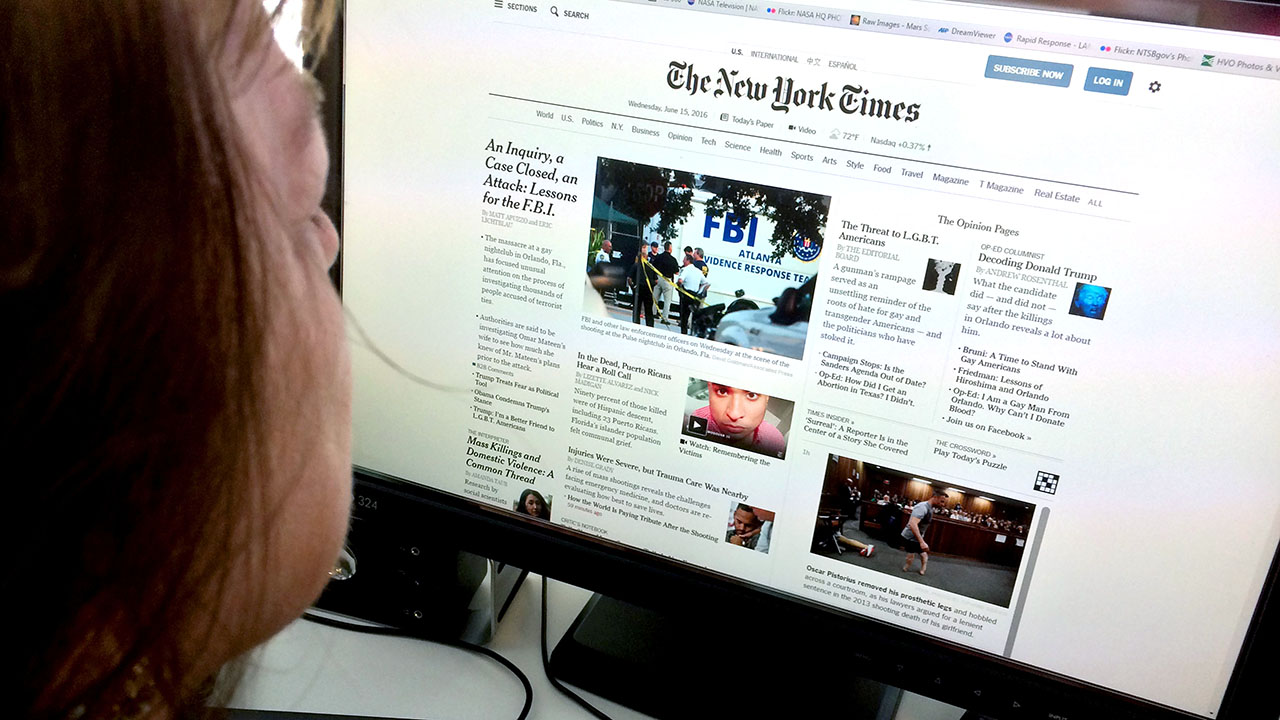The Development of Journalism in the Age of Information Online
In the quickly transforming landscape of journalism, the digital age has actually ushered in a new era where the immediacy of on the internet news improves both its creation and intake. The rise of person journalists and independent voices better complicates the narrative, contributing to a lively yet precarious media environment.

Surge of Digital News Platforms
The increase of digital information systems has actually fundamentally transformed the landscape of journalism, noting a change from typical print media to vibrant, online rooms. This advancement was thrust by innovations in modern technology and the enhancing availability of the web, which enabled news to be shared swiftly and broadly. Unlike their print counterparts, digital systems can promptly update material, offering real-time information coverage and analysis that interest the modern-day reader's need for immediacy and significance.
Digital platforms have actually additionally expanded the scope of journalism, allowing a diversity of voices and point of views. With reduced barriers to access, independent reporters and smaller sized news companies can reach worldwide audiences, testing the syndicate as soon as held by established media empires. This democratization of news has enhanced the general public discussion, using varied narratives and satisfying specific niche rate of interests that were formerly underserved.
In addition, the integration of multimedia elements such as video clip, sound, and interactive graphics enhances narration, making information extra engaging and accessible (dw news). This multimedia approach not only attracts a broader audience however also aids in the understanding of complicated stories. Essentially, electronic systems have actually redefined journalism, fostering development and versatility in an ever-evolving media setting

Effect of Social Network
Social media platforms have even more transformed journalism by modifying exactly how news is taken in and shared. These platforms have actually democratized information circulation, allowing any person with net accessibility to report events in real-time. This immediacy has actually positioned traditional news outlets in a race to maintain up, engaging them to adopt quicker reporting approaches. In addition, social media sites has actually expanded target markets, approving journalists accessibility to international viewership past geographical constraints.

The interactive nature of social networks cultivates engagement, allowing target markets to take part in conversations, share point of views, and add to news narratives. This communication boosts the vibrant in between journalists and their target markets, advertising a more participatory form of journalism. Nonetheless, this additionally puts tremendous pressure on journalists to produce content that resonates with audiences, frequently prioritizing sensationalism to capture attention.
Moreover, social media platforms have actually ended up being essential devices for journalists to source stories, gauge public opinion, and network with industry peers. The reliance on social media likewise requires a critical analysis of sources to make certain the credibility of details shared.
Difficulties of False Information
Amidst the digital change of journalism, one significant difficulty is the prevalent spread of misinformation. In an age where info is plentiful and quickly obtainable, differentiating in between reputable news and fabricated web content has become significantly challenging. The large volume of info shared across various on the internet platforms typically blurs the line in between fact and fiction, posing a considerable risk to the integrity of journalism.
Misinformation can spread quickly via social media sites, where formulas prioritize engagement over precision, accidentally amplifying incorrect narratives (dw news). This not just threatens public count on media institutions however likewise fosters an atmosphere where misleading material can affect public viewpoint and decision-making processes. The obstacle for reporters is twofold: to expose falsehoods efficiently and to promote rigorous requirements of fact-checking and confirmation
Additional complicating this problem is the presence of deepfakes and innovative disinformation projects that take advantage of progressed modern technologies to create deceptive web content identical from reputable reporting. As these innovations progress, so have to the strategies and tools used by journalists to battle them. Attending to false information requires collaboration between media organizations, innovation business, and policymakers to establish detailed techniques that secure the credibility of info in the electronic age.
Function of Person Reporters
Browsing the landscape of false information highlights the transformative influence of citizen reporters within the digital realm. As typical media electrical outlets face the large speed and volume of information circulation online, person reporters-- normal people equipped with smart devices and accessibility to social networks-- are playing a progressively crucial duty. These grassroots factors have actually ended up being critical in covering events promptly, commonly providing real-time updates from the ground prior to mainstream media can respond.
Citizen reporters have democratized information coverage, magnifying voices that may otherwise continue to be unheard. By leveraging systems like Twitter, Facebook, and Instagram, they supply varied viewpoints that test the stories regularly pressed by established media. This democratization, nonetheless, likewise provides difficulties. The absence of official training or content oversight can result in the spread of unverified info, making complex efforts to differentiate fact from fiction.
Nonetheless, resident journalism is improving the media landscape, compelling conventional electrical outlets to adapt by integrating user-generated web content into their coverage. By fostering area involvement and motivating participatory browse around this site journalism, these digital authors contribute to an extra comprehensive and vibrant news environment. As resident journalists proceed to progress, their duty in forming public discussion remains a vital part of contemporary journalism.

Future of Journalistic Honesty
The spreading of digital systems has actually democratized details circulation, allowing a bigger array of voices to add to the news landscape. This has actually also led to the spread of false information and the erosion of count on in media.
The surge of artificial knowledge and algorithm-driven web content curation better complicates the landscape. While AI can enhance reporting by assessing huge datasets and recognizing fads, it additionally poses dangers of prejudice and adjustment. Journalists have to for that reason remain attentive, making sure that innovation functions as a tool for truth instead of distortion.
Moreover, the economic stress on typical media outlets require ingenious organization versions to sustain top quality journalism. Subscription-based versions, nonprofit financing, and collaborations with tech firms are becoming potential remedies. Yet, they must be pursued without jeopardizing editorial self-reliance.
Inevitably, the future of journalistic honesty relies on the dedication of media and journalists companies to promote transparency, liability, and a steadfast commitment to reality, in the middle of a quickly transforming digital globe.
Verdict
The evolution of journalism in the digital age offers both possibilities and challenges. The surge of digital information platforms and social media has democratized info circulation, equipping a diverse variety of voices, consisting of resident reporters. Nevertheless, these developments demand cautious efforts to deal with misinformation and copyright journalistic stability. The future of journalism pivots on the ability to adapt cutting-edge service versions that maintain top quality coverage while preserving the credibility and trust essential for notified public discourse.
The rise of electronic information systems has essentially changed the landscape of journalism, noting a change from conventional print media to vibrant, online spaces. With lower barriers to entry, independent journalists and smaller sized information organizations can get to worldwide target markets, testing the syndicate when great site held by established find more information media corporations.Social media systems have actually further revolutionized journalism by changing how information is taken in and shared. As standard media electrical outlets grapple with the large rate and quantity of news circulation online, resident journalists-- common people equipped with smartphones and access to social media-- are playing an increasingly essential duty. The surge of digital news systems and social media has equalized info dissemination, encouraging a varied selection of voices, consisting of citizen journalists.